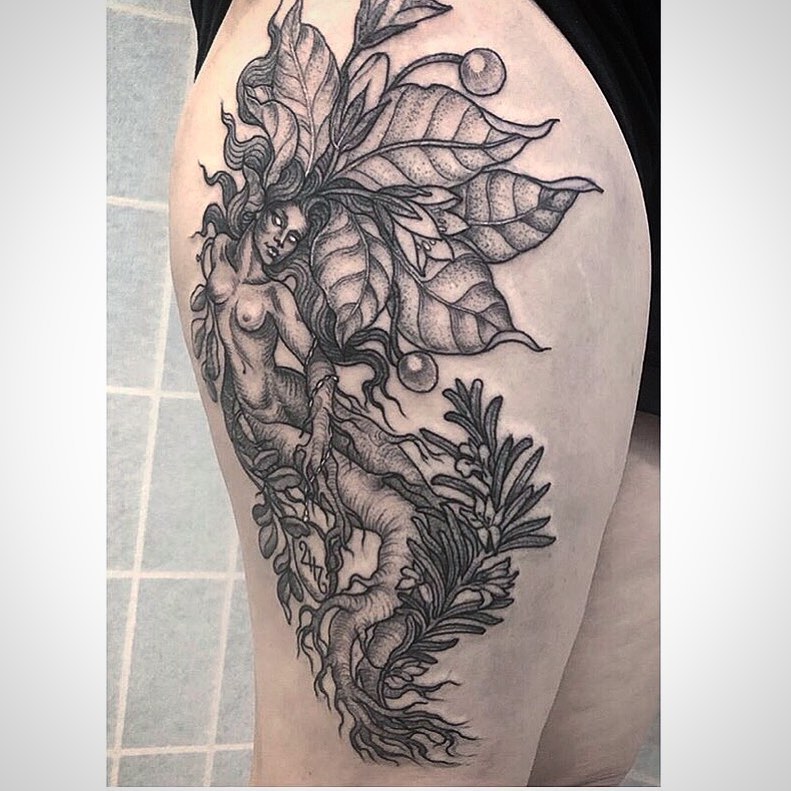1. Triquetra
The Triquetra, also known as the Trinity Knot, is a symbol of unity and interconnection. Originating in Celtic paganism, it represents the tripartite nature of existence: life, death, and rebirth or earth, sea, and sky. In modern interpretations, it may also symbolize the interconnectedness of body, mind, and spirit. The loops in the knot are endless, suggesting eternity and the cycle of life. As a tattoo, the Triquetra is often chosen by those who wish to express their spiritual journey or a connection to nature’s cycles. It can also represent the importance of balance and harmony in one’s life.
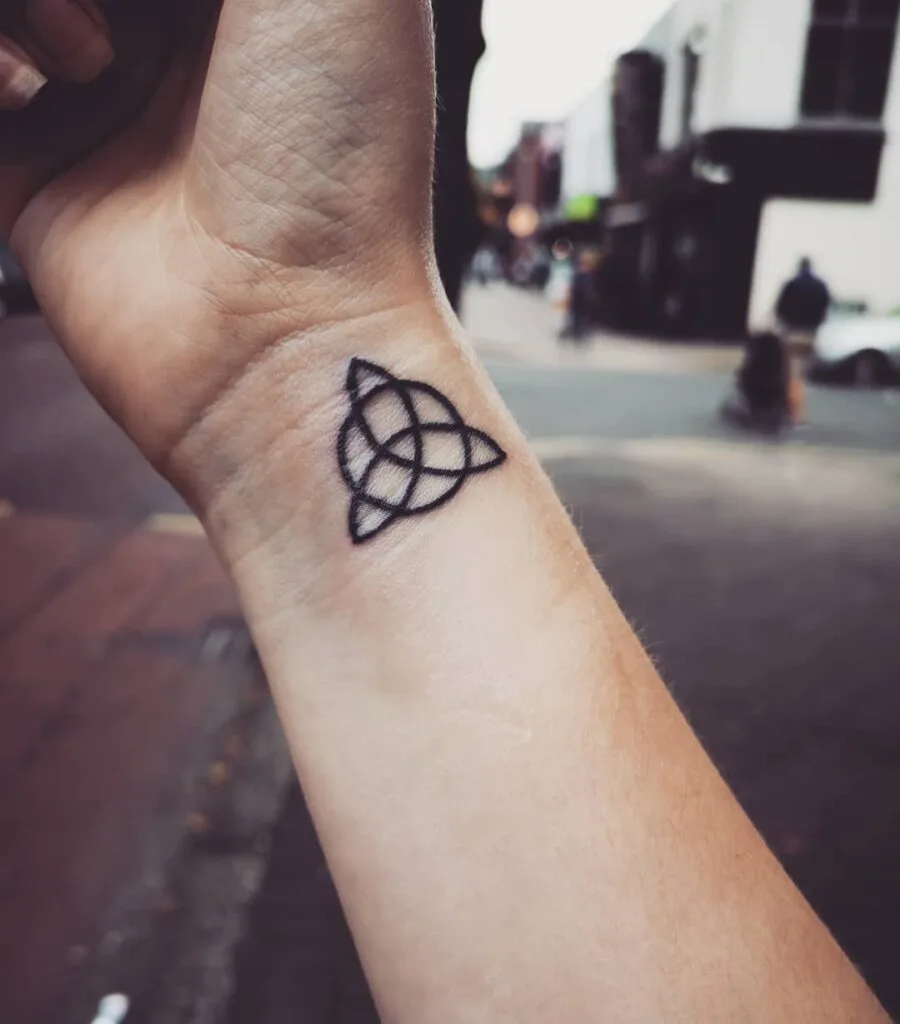
2. Pentacle
The Pentacle is a five-pointed star, often enclosed within a circle, and is a prominent symbol in various pagan traditions, including Wicca. Each point of the star represents one of the five elements: earth, air, fire, water, and spirit. The circle surrounding the star signifies protection and unity. It is believed to offer guidance, protection, and a connection to the spiritual realm. As a tattoo, it symbolizes a harmonious balance of nature’s elements and one’s alignment with the forces of the universe. Many people choose the Pentacle to convey their respect for nature, personal power, or spiritual journey.
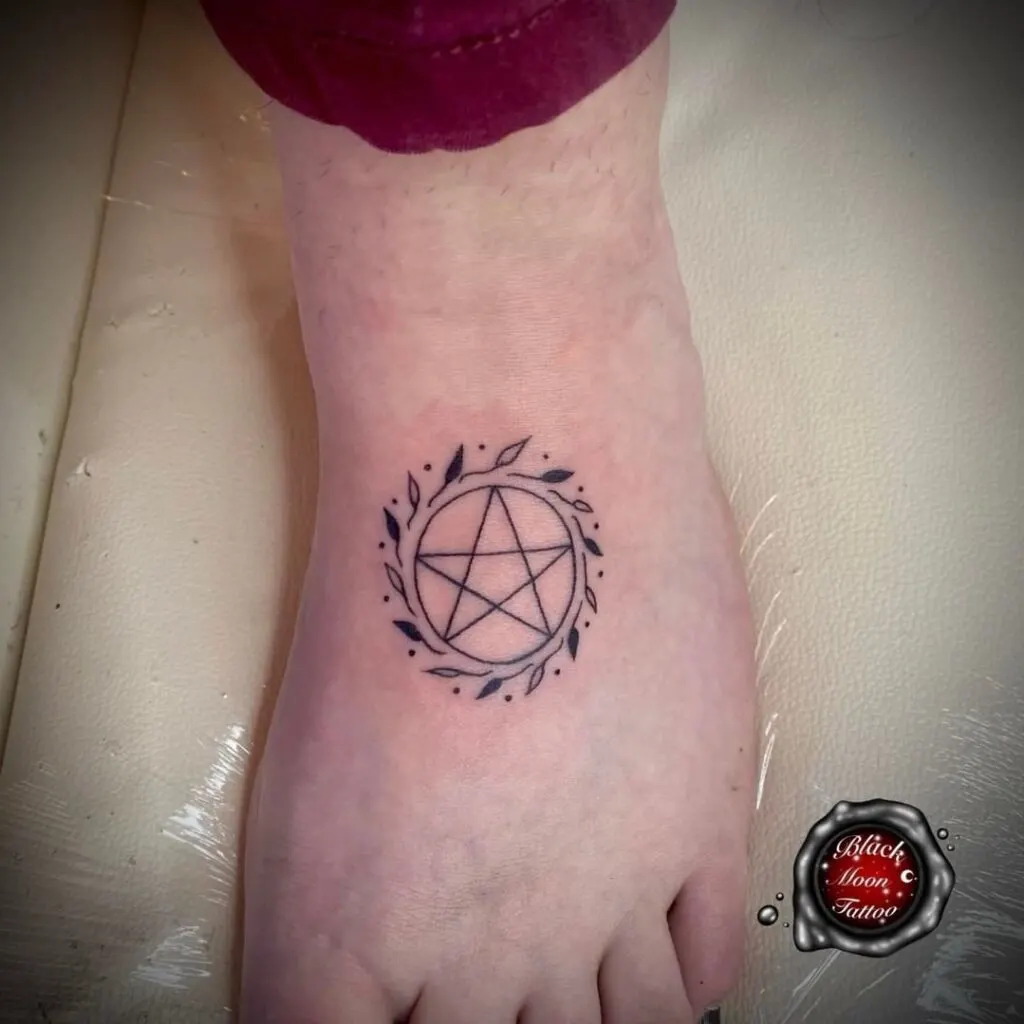
3. Thor’s Hammer (Mjölnir)
Thor’s Hammer, or Mjölnir, is a Norse symbol associated with the thunder god Thor, who is known for his strength and protection of humanity. It was used as a protective amulet in Viking culture, often worn to invoke the god’s power and safeguard against evil forces. As a tattoo, Mjölnir signifies strength, courage, and protection. Many wear it to represent their resilience in the face of challenges or their affinity with Norse mythology and ancient warrior culture. This symbol is popular among those who seek to honor their Scandinavian heritage or embody Thor’s unyielding will.
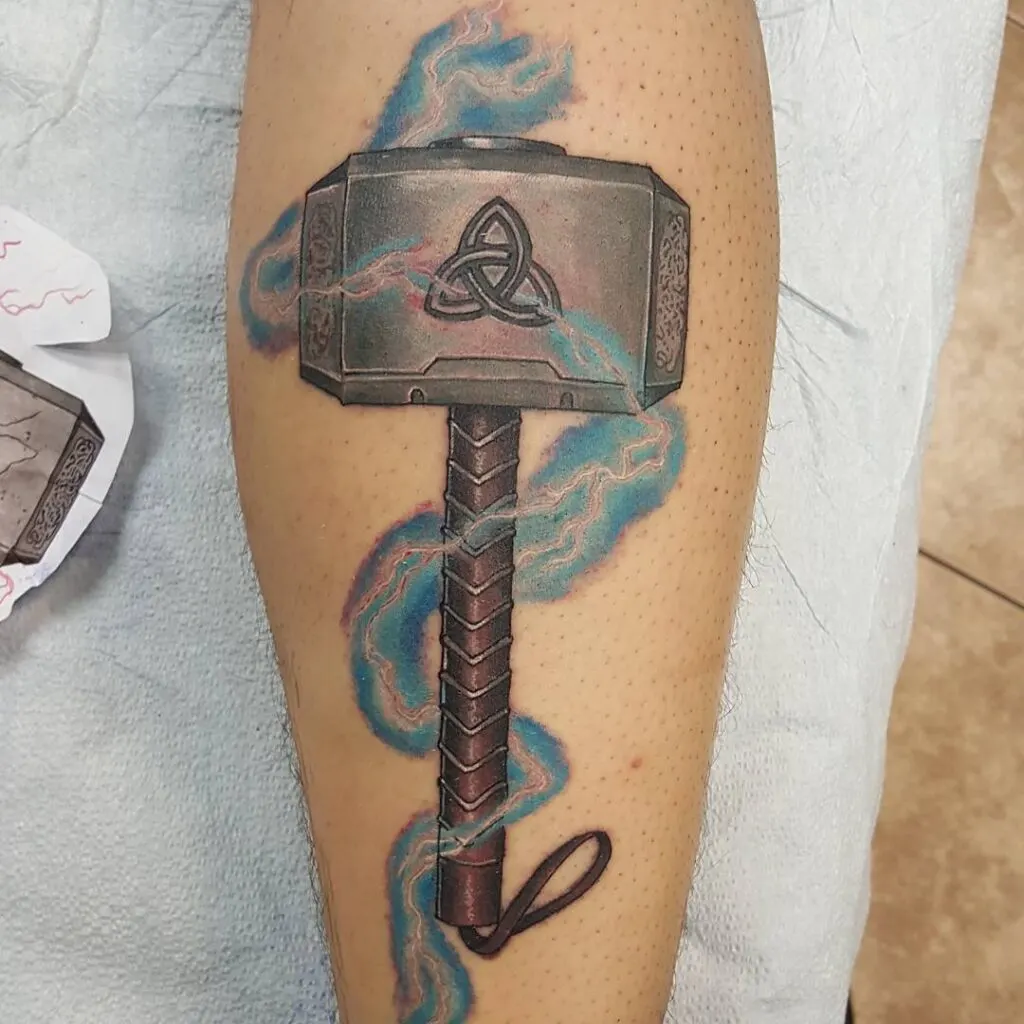
4. Helm of Awe (Ægishjálmur)
The Helm of Awe is another powerful symbol from Norse mythology. It is a magical stave believed to offer protection and instill fear in enemies. The symbol consists of eight arms radiating from a central point, symbolizing power and dominance. Vikings often painted it on their foreheads before battle to summon strength and courage. As a tattoo, the Helm of Awe represents personal empowerment, protection, and the ability to overcome obstacles. It is often chosen by those who want to symbolize inner strength, perseverance, and their readiness to confront life’s challenges.
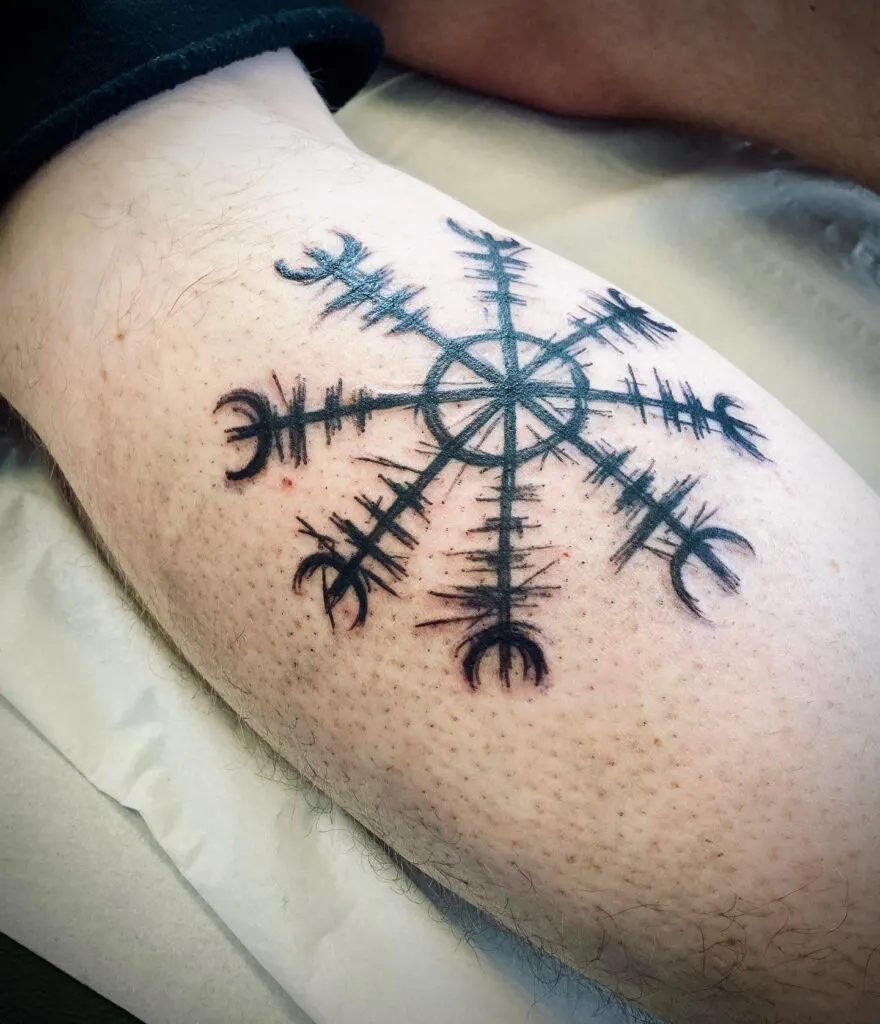
5. Green Man
The Green Man is a figure found in many pagan traditions, particularly in Celtic lore. He is depicted as a face made of or surrounded by leaves and branches, symbolizing the cycle of life, death, and rebirth. The Green Man is seen as the guardian of nature, representing the regenerative forces of the earth. As a tattoo, it can symbolize one’s connection to the natural world, growth, fertility, and the endless cycles of life. Those who wear this symbol often seek to express their respect for nature, sustainability, or their desire to live in harmony with the earth.
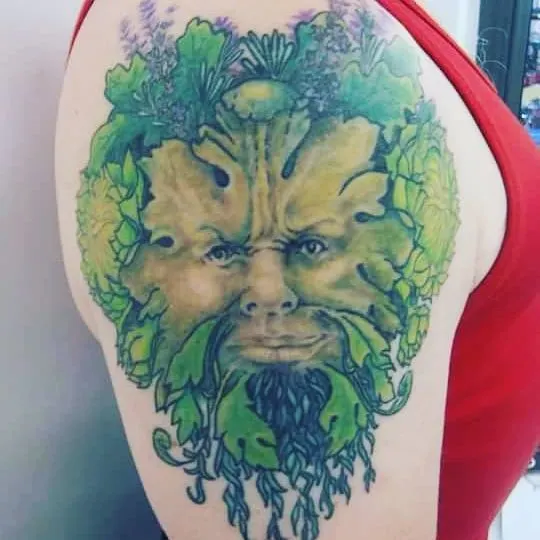
6. Triple Moon
The Triple Moon symbol represents the three phases of the moon: waxing, full, and waning. It is often associated with the goddess in Wiccan and pagan traditions, symbolizing her three aspects: Maiden, Mother, and Crone. The waxing moon represents new beginnings and growth, the full moon symbolizes power and fulfillment, and the waning moon stands for reflection and closure. As a tattoo, the Triple Moon expresses the cyclical nature of life, one’s connection to the goddess, and the different phases of womanhood. It is often chosen by those who follow lunar cycles or revere feminine power.

7. Ouroboros
The Ouroboros is an ancient symbol depicting a serpent or dragon eating its own tail. Found in many cultures, it represents the cycle of life, death, and rebirth, as well as the concept of eternity. In pagan beliefs, the Ouroboros signifies the interconnectedness of all things and the constant renewal of life. As a tattoo, it is chosen by those who resonate with the idea of infinity, self-reflection, or transformation. It can also symbolize the continuous evolution of the self and the eternal nature of the universe, making it a powerful emblem of spiritual growth.
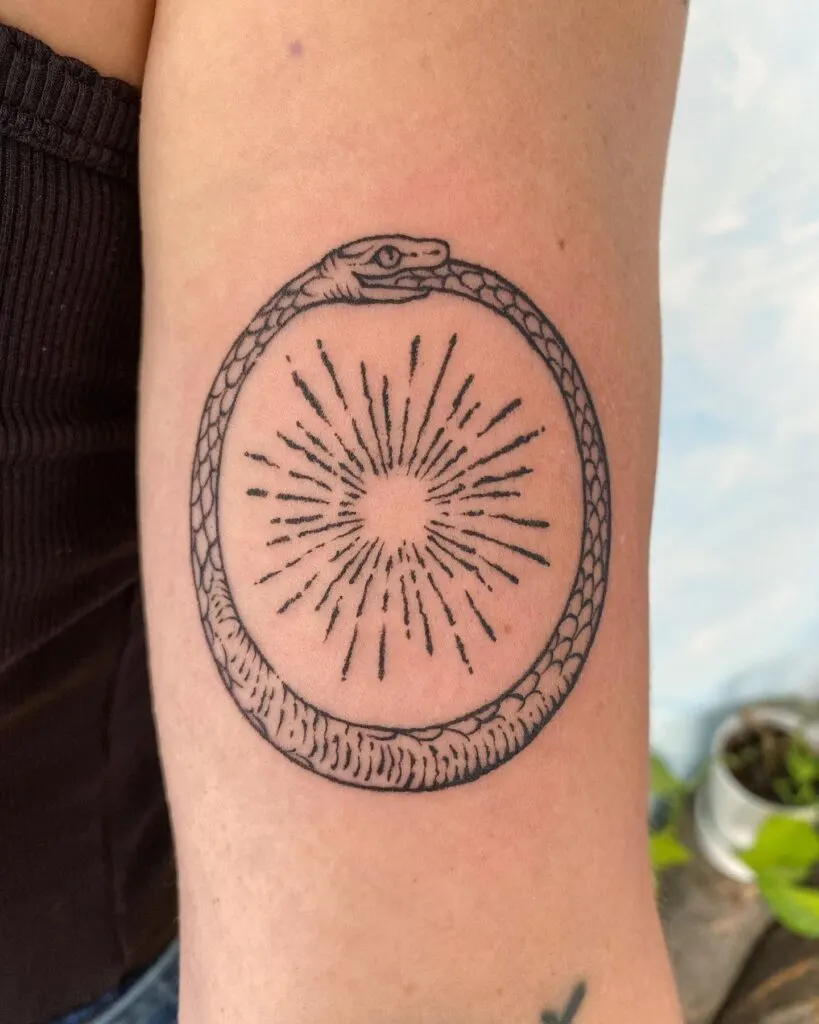
8. Tree of Life
The Tree of Life is a universal symbol found in various cultures, particularly in Celtic paganism. It represents the interconnectedness of all life, with its roots reaching deep into the earth and branches stretching toward the sky. The Tree of Life symbolizes balance, harmony, and the cycle of life. As a tattoo, it can represent personal growth, wisdom, and strength. It is often chosen by those who feel a deep connection to nature and the spiritual world, as well as by individuals seeking to reflect on the continuity of life and their place within it.

9. Ankh
The Ankh is an ancient Egyptian symbol often referred to as the “key of life” or “cross of life.” It represents eternal life and the connection between the earthly and divine realms. The loop at the top symbolizes the spirit, while the crossbar represents the material world. As a tattoo, the Ankh is chosen to express one’s belief in eternal life, spiritual awakening, and a connection to the divine. It is also a powerful symbol of health, vitality, and the balance between life and death, often worn by those seeking protection and spiritual growth.
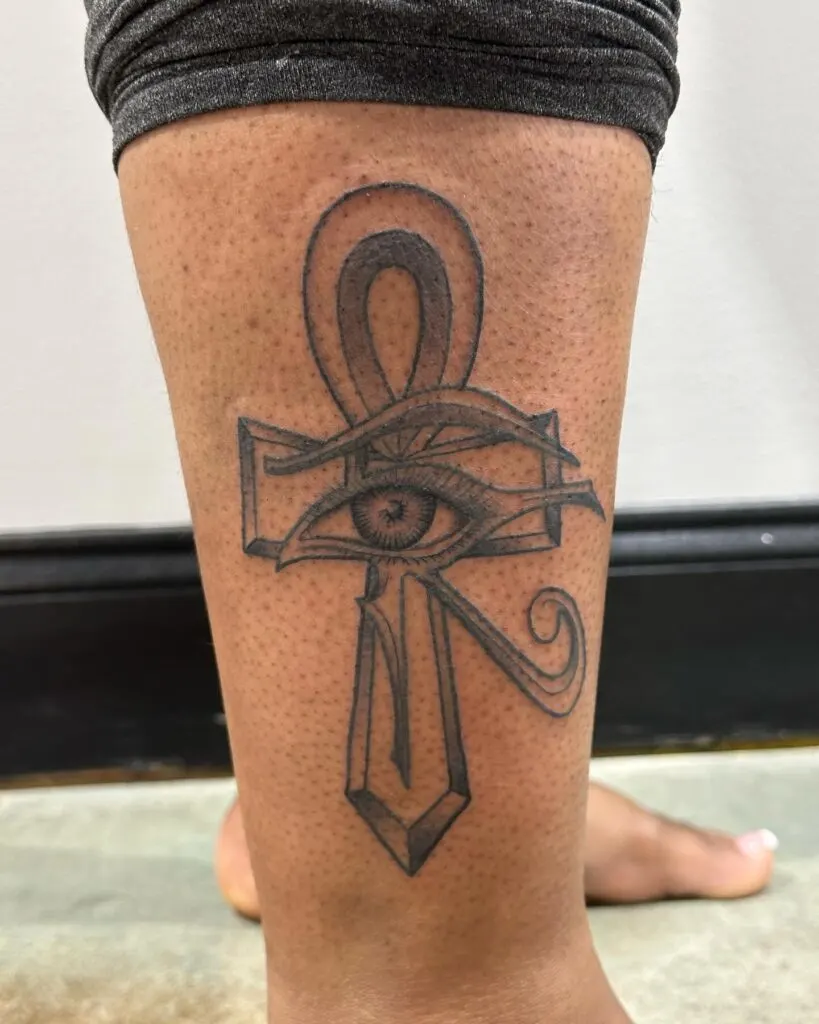
10. Hecate’s Wheel
Hecate’s Wheel is a symbol associated with the Greek goddess Hecate, who governs magic, witchcraft, and crossroads. The wheel represents the cycle of life and the journey of the soul, often reflecting the three stages of a woman’s life: Maiden, Mother, and Crone. It is also tied to spiritual knowledge and the mysteries of the universe. As a tattoo, Hecate’s Wheel signifies wisdom, guidance, and transformation. It is often chosen by those who feel connected to witchcraft or the goddess Hecate, symbolizing their path of spiritual discovery and personal empowerment.
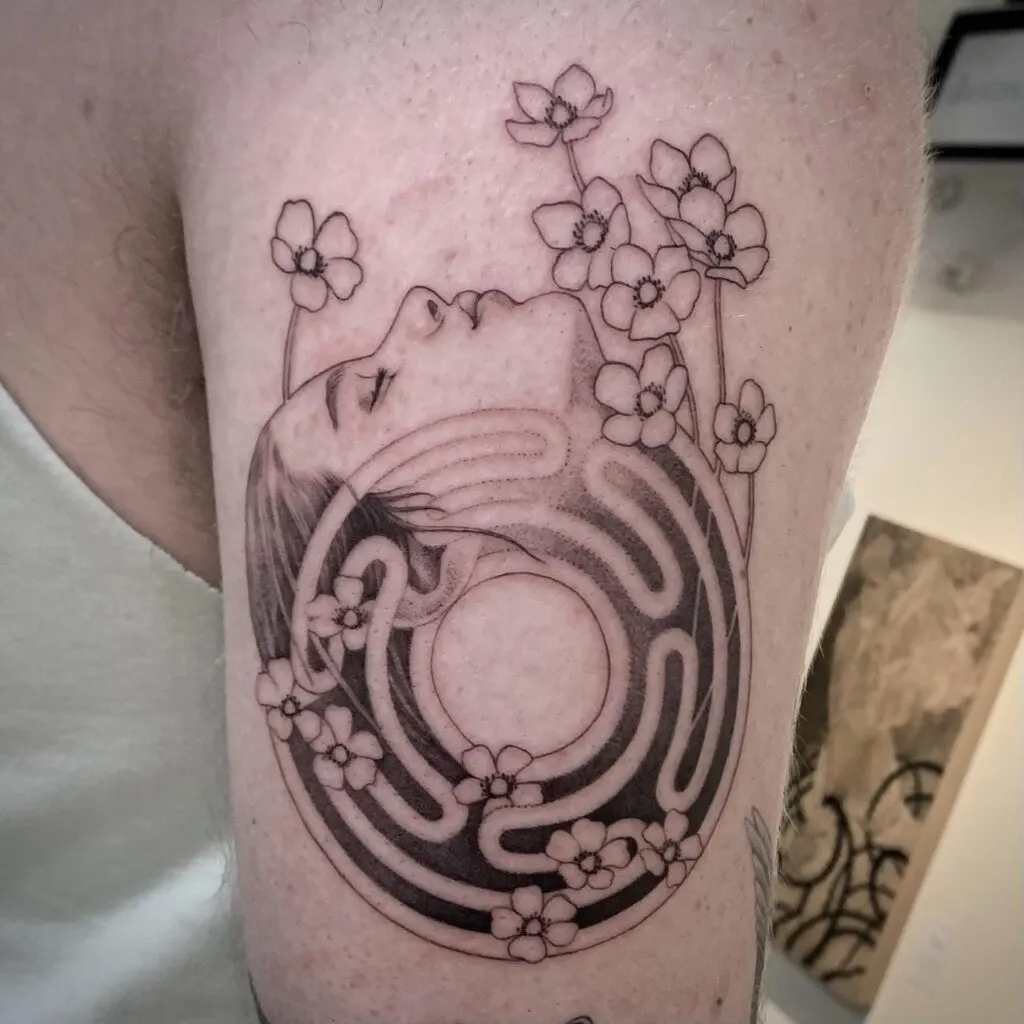
11. Runes
Runes are characters from ancient alphabets used by Germanic peoples, including the Vikings. Each rune has a specific meaning, often related to power, protection, and divination. As tattoos, runes are popular for their deep symbolism and magical associations. Specific runes like “Algiz” for protection or “Fehu” for wealth are often chosen based on the wearer’s desires or life path. Those who get rune tattoos typically do so to evoke the runic powers, to honor their Norse or Germanic heritage, or as a spiritual tool for protection and personal growth.
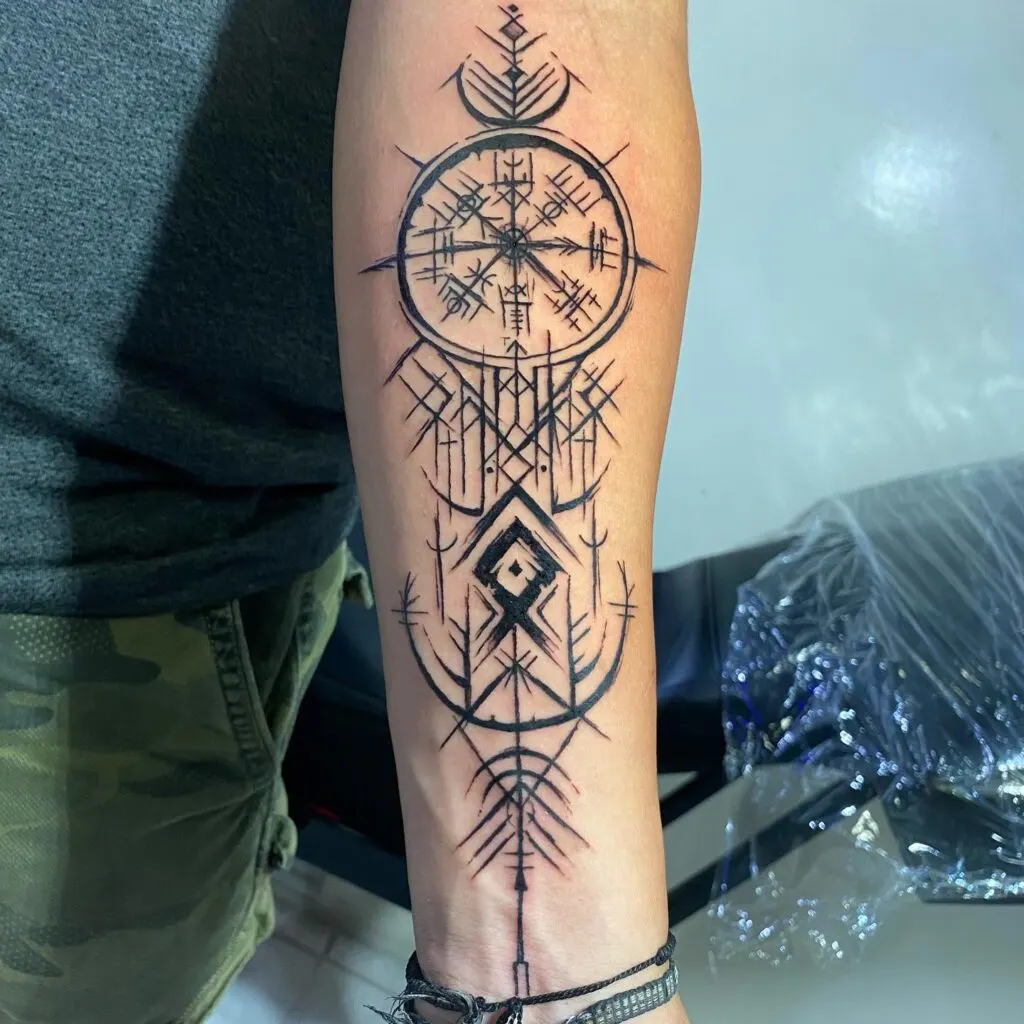
sebastriart_andtribaltattooshop
12. Sun Wheel
The Sun Wheel is a pagan symbol representing the solar cycle, often used in Celtic and Norse traditions. It is composed of a circle with a cross inside, symbolizing the four seasons and the balance between night and day. As a tattoo, the Sun Wheel reflects the wearer’s connection to the cycles of nature and the changing seasons. It can also represent vitality, life force, and cosmic order. Many choose this tattoo to signify their respect for nature, their alignment with solar energy, or their belief in the eternal cycle of life and death.
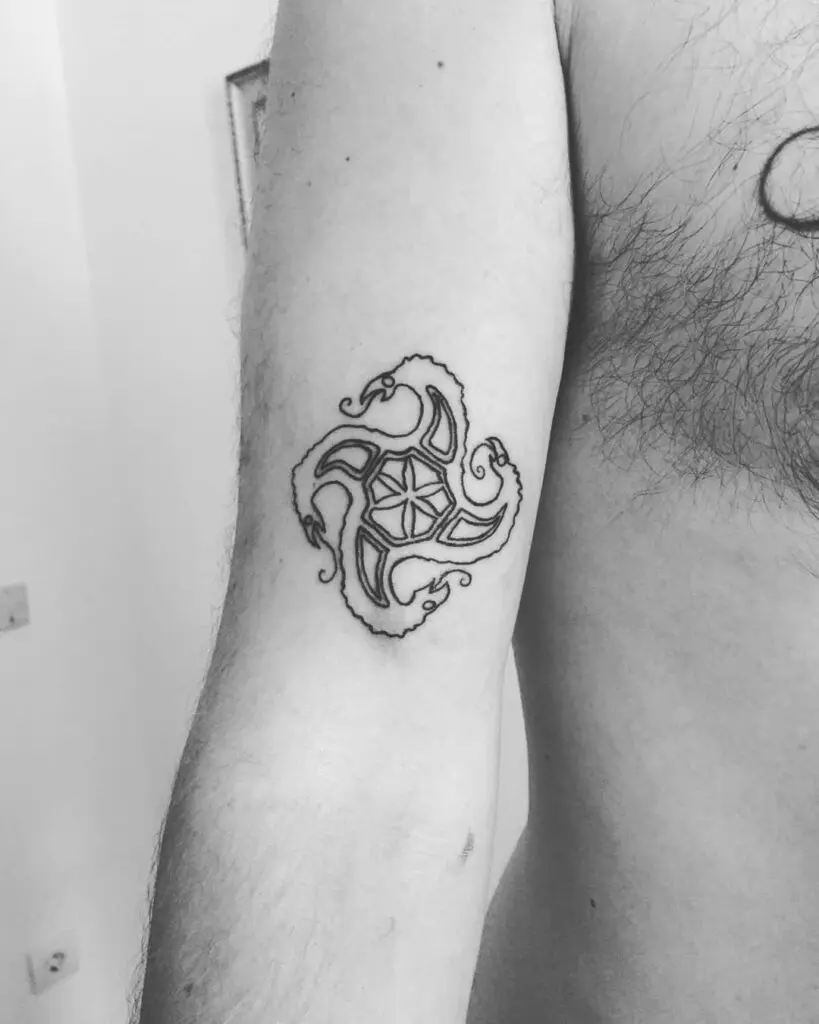
13. Valknut
The Valknut is a symbol made of three interlocking triangles, often associated with Norse mythology and the god Odin. It is believed to represent the afterlife and the transition between life and death. The Valknut is frequently depicted in Viking art and is thought to have been a symbol of protection for warriors. As a tattoo, it signifies courage, strength, and the wearer’s readiness to face challenges head-on. Those with a Valknut tattoo often want to express their connection to Norse culture or their acceptance of life’s transient nature.
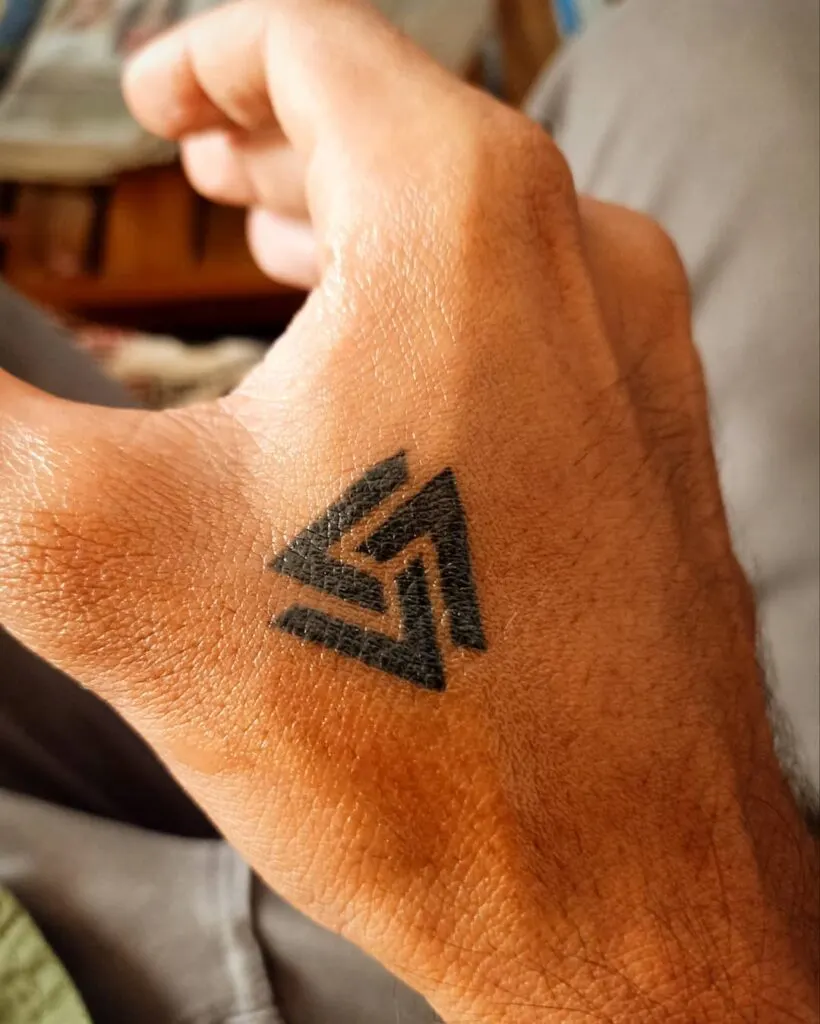
14. Horned God
The Horned God is a symbol in Wiccan and pagan traditions representing male energy, the wild, and the hunt. Often depicted with antlers or horns, he embodies the primal, natural forces of masculinity and the cycles of life, death, and rebirth. As a tattoo, the Horned God is chosen to symbolize strength, virility, and one’s connection to nature and the wilderness. Many who follow Wiccan or neo-pagan paths choose this tattoo to represent their reverence for the masculine divine, or to evoke a balance between human civilization and the natural world.
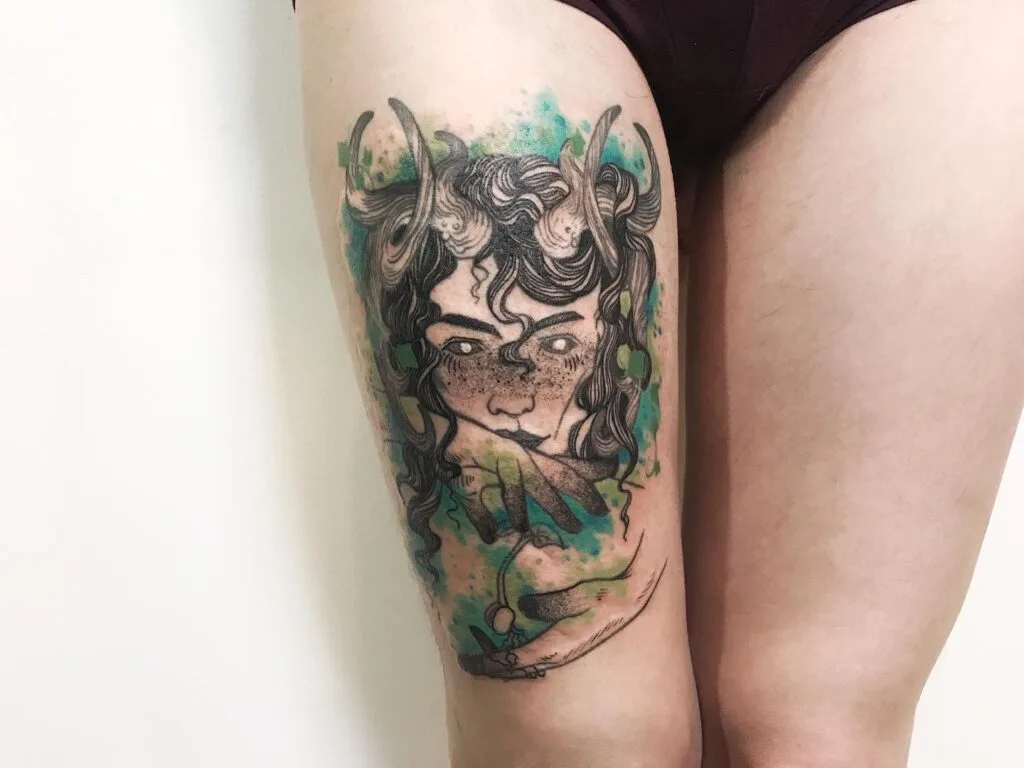
15. Cernunnos
Cernunnos is a Celtic god associated with nature, animals, fertility, and wealth. He is often depicted as a man with stag antlers, symbolizing the union of humanity and nature. As a tattoo, Cernunnos represents a deep connection to the earth and its creatures, as well as the cycles of life, death, and rebirth. Those who choose this symbol often seek to honor their bond with nature, fertility, or the mysteries of the natural world. Cernunnos is particularly popular among those who follow druidic or Celtic pagan traditions.
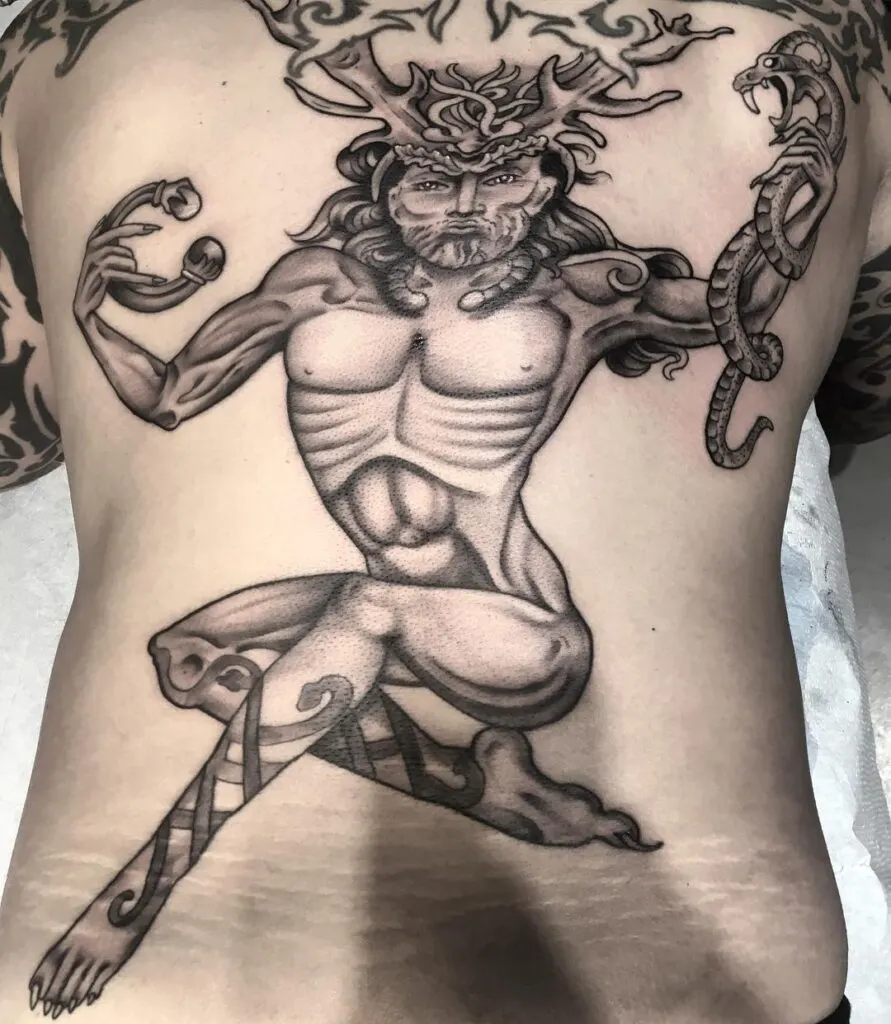
16. Labrys
The Labrys is a double-headed axe that was a prominent symbol in ancient Minoan culture and later adopted by various pagan traditions. It is often associated with female power, particularly in matriarchal societies, and represents strength, protection, and authority. As a tattoo, the Labrys is a symbol of feminist empowerment, often worn by those who embrace the goddess energy or identify with strong, independent womanhood. It can also represent one’s connection to ancient matriarchal societies or a desire for balance and justice in life.
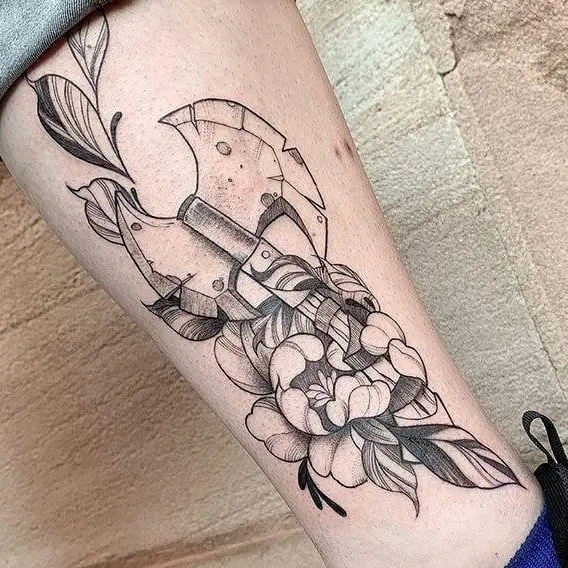
17. Raven
The raven is a powerful symbol in many pagan cultures, including Norse and Celtic traditions. In Norsemythology, Odin’s ravens, Huginn and Muninn, represent thought and memory. Ravens are also seen as messengers between the human world and the spirit realm. As a tattoo, the raven can symbolize wisdom, intelligence, and a connection to the divine. It is often chosen by those who feel a connection to the spirit world or who seek guidance and clarity in their lives. Ravens also represent transformation and change, making them a popular choice for those embracing new beginnings.
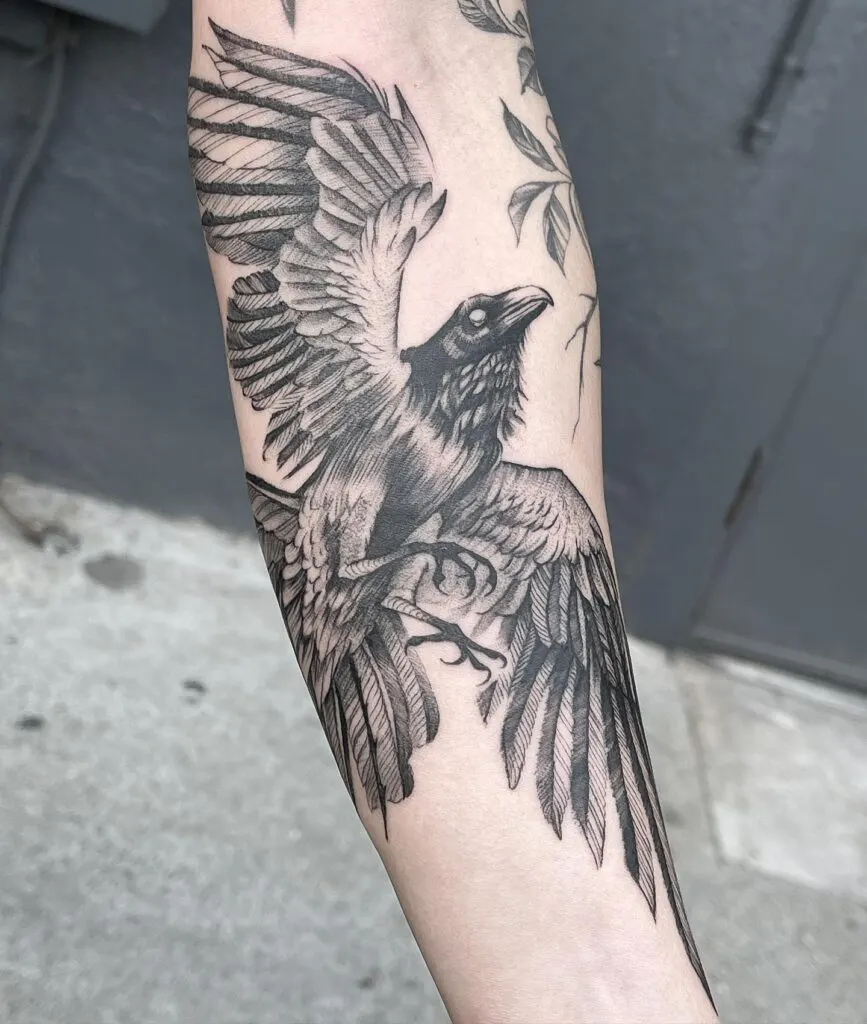
18. Scarab Beetle
The Scarab Beetle is an ancient Egyptian symbol representing transformation, protection, and rebirth. It was often used as an amulet in Egyptian culture, believed to ward off evil and ensure safe passage to the afterlife. As a tattoo, the scarab signifies personal transformation, spiritual protection, and the cycle of life and death. It is often chosen by those who seek renewal or protection on their life’s journey. The scarab also represents perseverance and the ability to overcome obstacles, making it a popular symbol for those facing personal challenges.
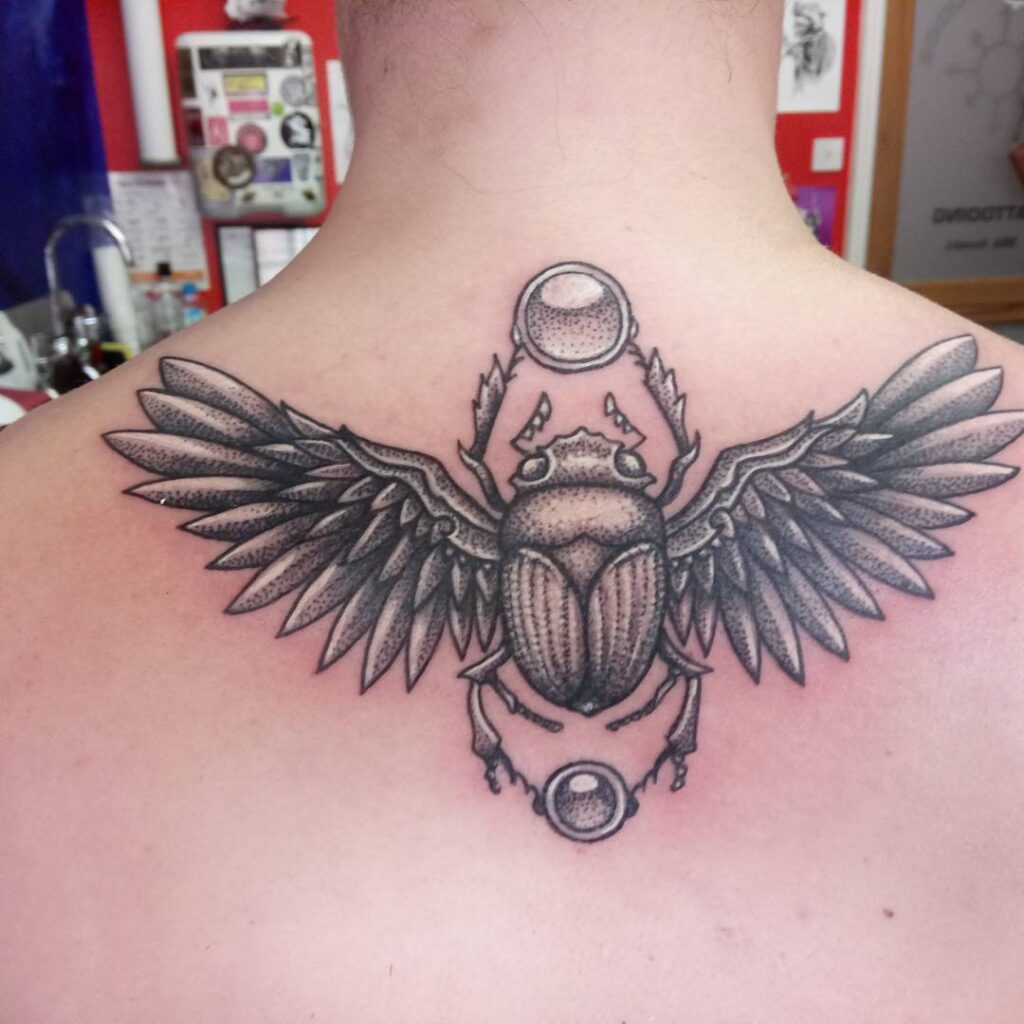
19. Baphomet
Baphomet is a symbolic figure often associated with occultism and pagan traditions, particularly in the context of balance between opposites—light and dark, male and female, heaven and earth. Although sometimes misunderstood, Baphomet represents harmony and the integration of dualities. As a tattoo, Baphomet can symbolize spiritual independence, personal empowerment, and a rejection of conventional beliefs. It is often chosen by those who seek balance in their lives or wish to express their alignment with non-traditional spiritual paths. Baphomet can also serve as a symbol of inner transformation and self-discovery.
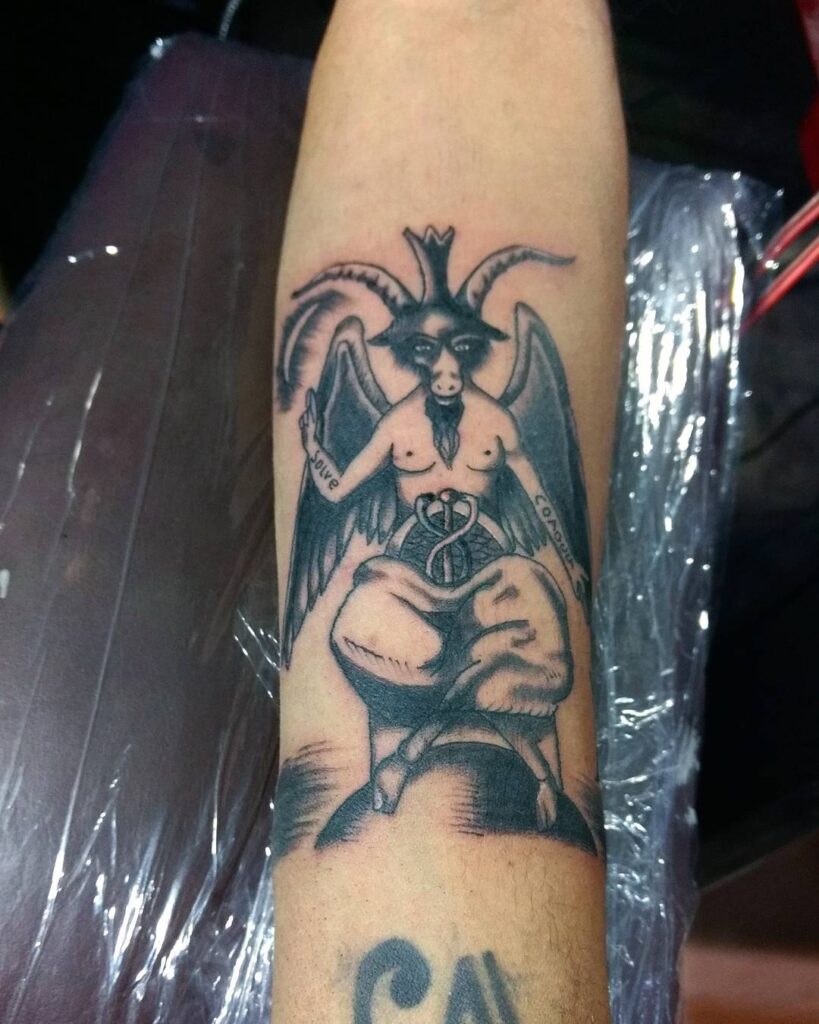
20. Gorgon
The Gorgon, often associated with Medusa in Greek mythology, represents both beauty and danger. Medusa’s snake-covered head symbolizes power, transformation, and protection. In many pagan traditions, the Gorgon is seen as a guardian figure, capable of warding off evil with her gaze. As a tattoo, the Gorgon symbolizes strength, independence, and the ability to protect oneself from harm. It is often chosen by individuals who want to express their resilience or who feel empowered by Medusa’s story of survival and defiance. The Gorgon tattoo can also represent one’s connection to ancient mythology and the mysteries of transformation.
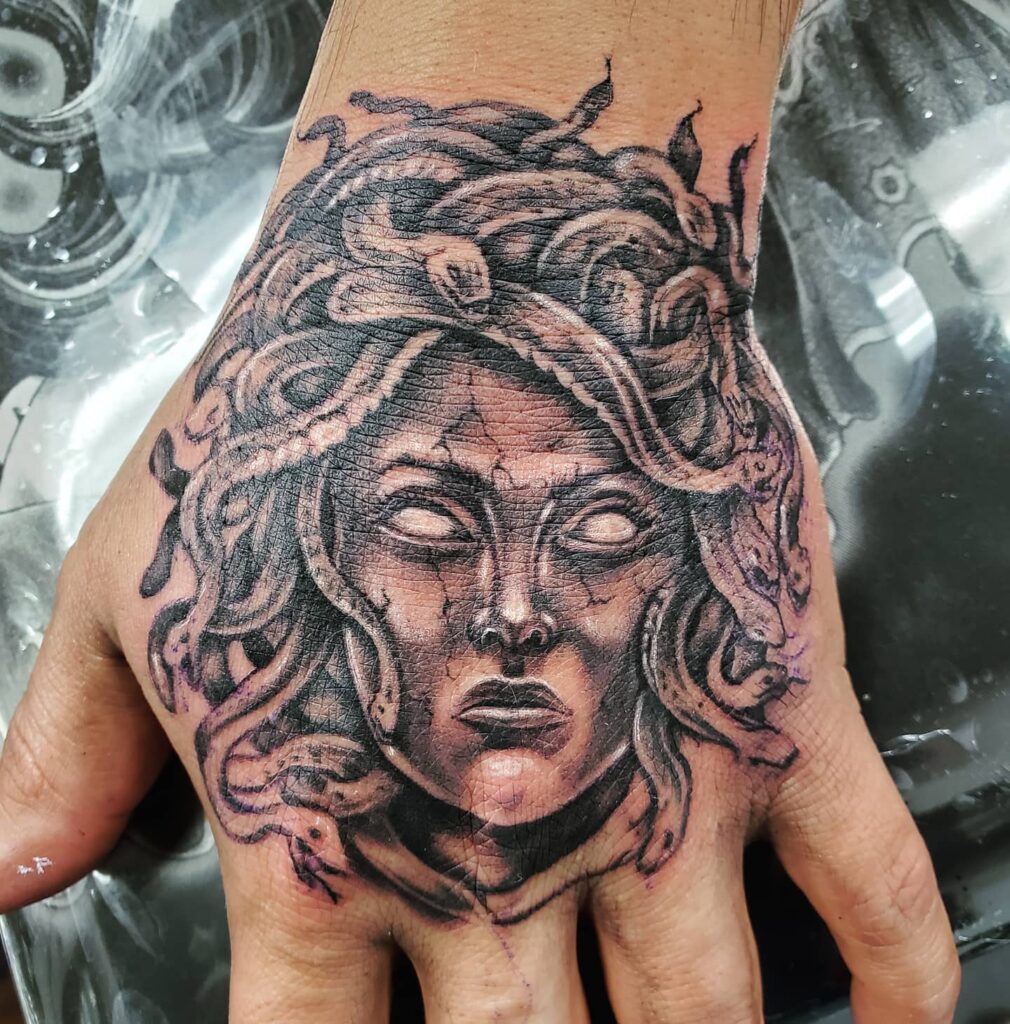
21. Horn of Plenty (Cornucopia)
The Cornucopia, or Horn of Plenty, is a symbol of abundance and nourishment in various pagan traditions. It is often associated with harvest festivals and the bounty of nature. As a tattoo, the Cornucopia represents abundance, fertility, and gratitude for life’s blessings. It is commonly chosen by those who wish to express their connection to the earth’s natural cycles, or their desire for prosperity and good fortune. The Cornucopia is also a symbol of nurturing and protection, making it a meaningful tattoo for individuals focused on growth and fulfillment.
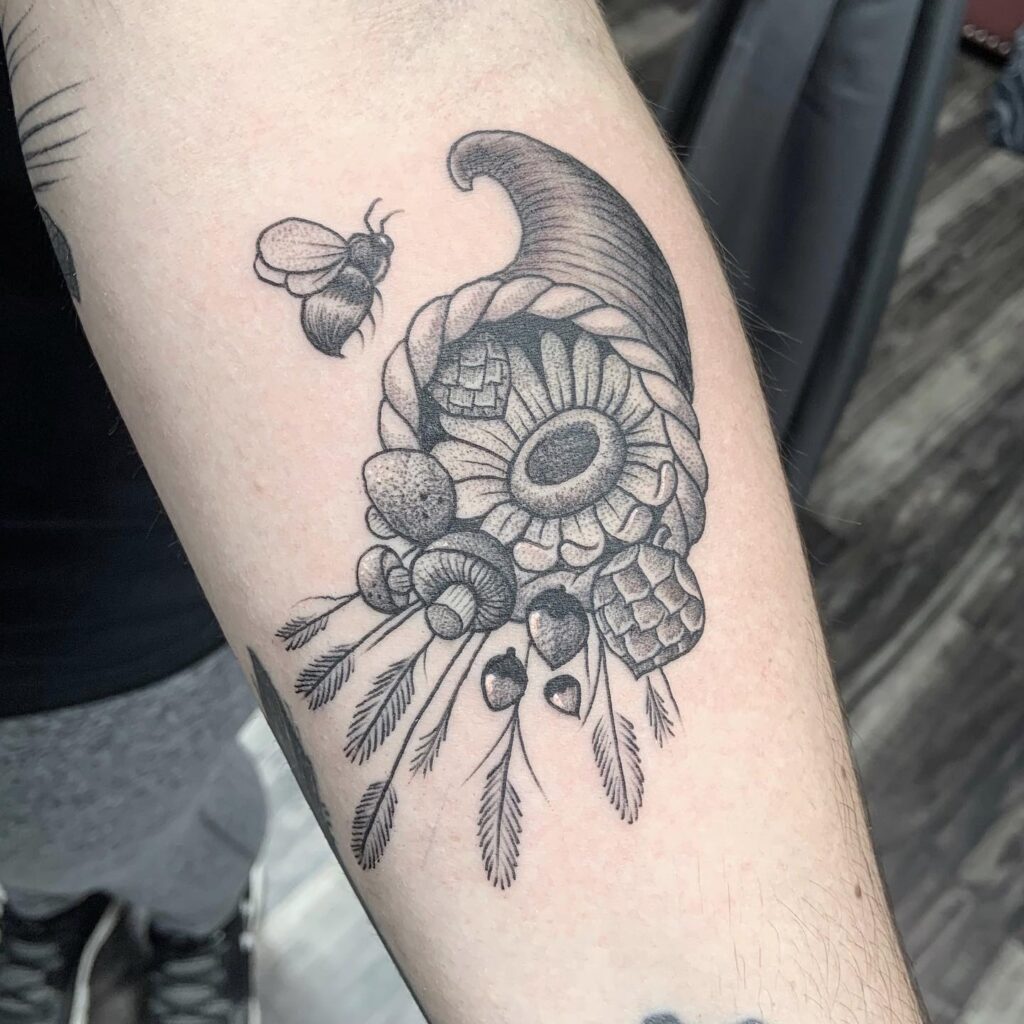
22. Triple Spiral (Triskelion)
The Triple Spiral, or Triskelion, is a Celtic symbol representing the cycle of life, death, and rebirth. It is also associated with the elements of land, sea, and sky, as well as personal growth and spiritual evolution. As a tattoo, the Triskelion signifies the continuous journey of the soul and the interconnectedness of all things. Many choose this tattoo to express their belief in the cyclical nature of life, or to honor their Celtic heritage. It is also a symbol of progress and forward motion, making it a popular choice for those focused on personal development.
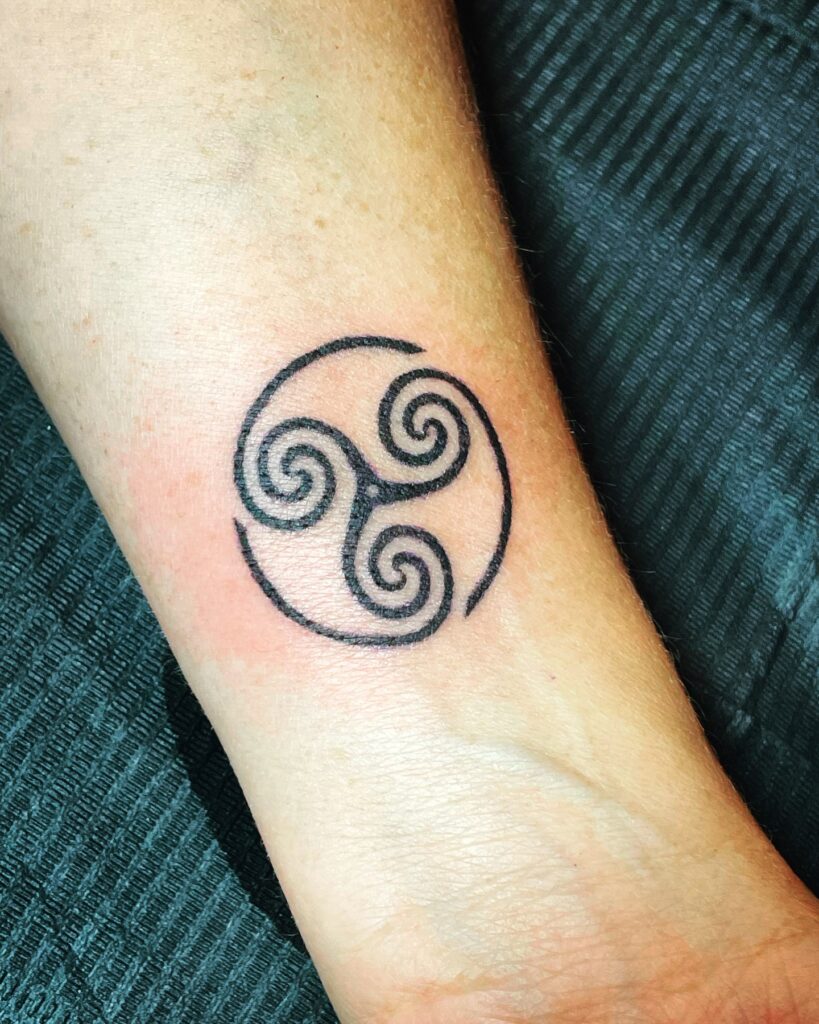
23. Wolf
The wolf is a powerful animal in many pagan cultures, symbolizing loyalty, intuition, and the wild spirit. In Norse and Celtic mythology, wolves are often seen as protectors or guides, representing the balance between independence and community. As a tattoo, the wolf can symbolize personal strength, the ability to navigate life’s challenges, and a deep connection to nature. It is often chosen by those who feel a kinship with the wild, or who value the protective and loyal nature of the wolf. The wolf tattoo can also represent personal freedom and the desire to follow one’s own path.
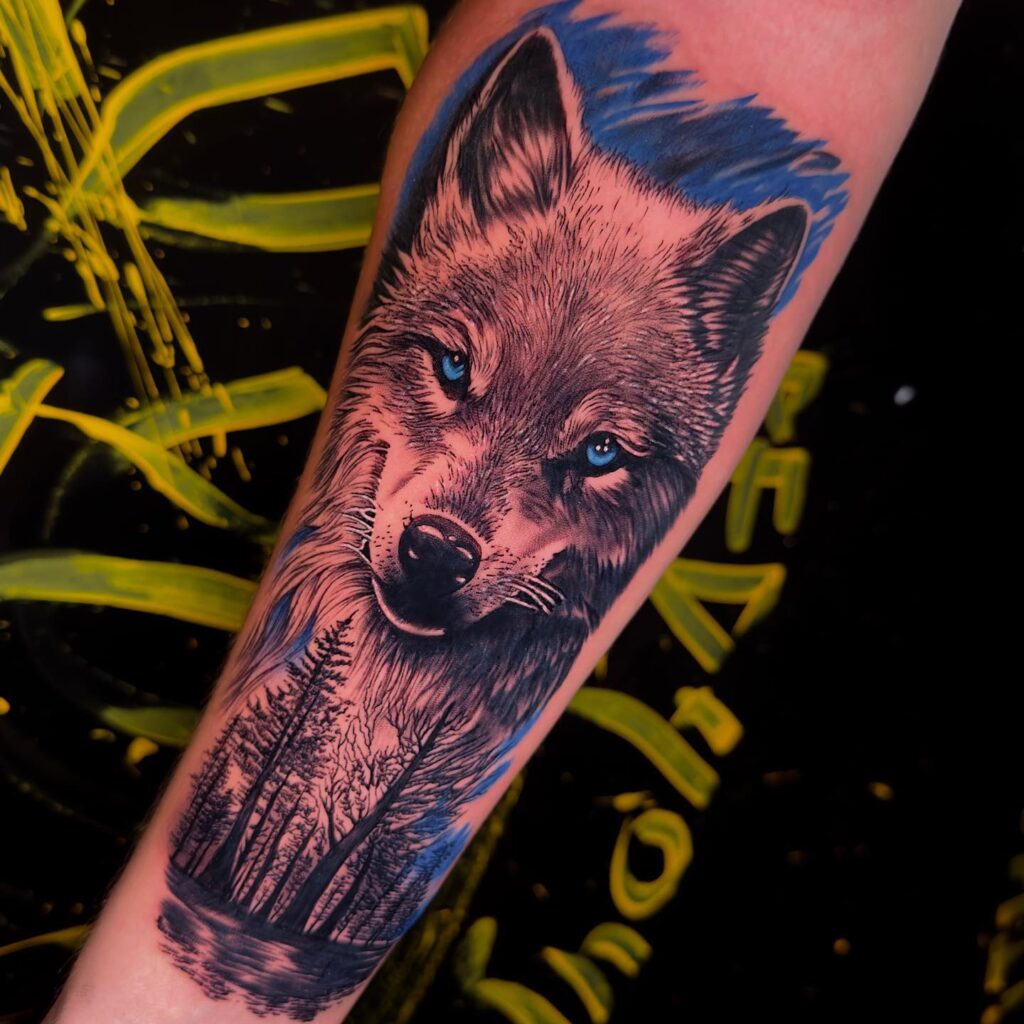
24. Moon Phases
Moon phases are central to many pagan traditions, symbolizing the cycles of life, nature, and spiritual growth. Each phase of the moon represents a different stage in life’s journey—new beginnings (new moon), growth and fulfillment (waxing and full moon), and reflection or release (waning moon). As a tattoo, moon phases are often chosen to reflect one’s connection to the lunar cycles or to honor the different phases of personal development. It is also a symbol of feminine power and intuition, making it popular among those who follow goddess-centered spirituality.
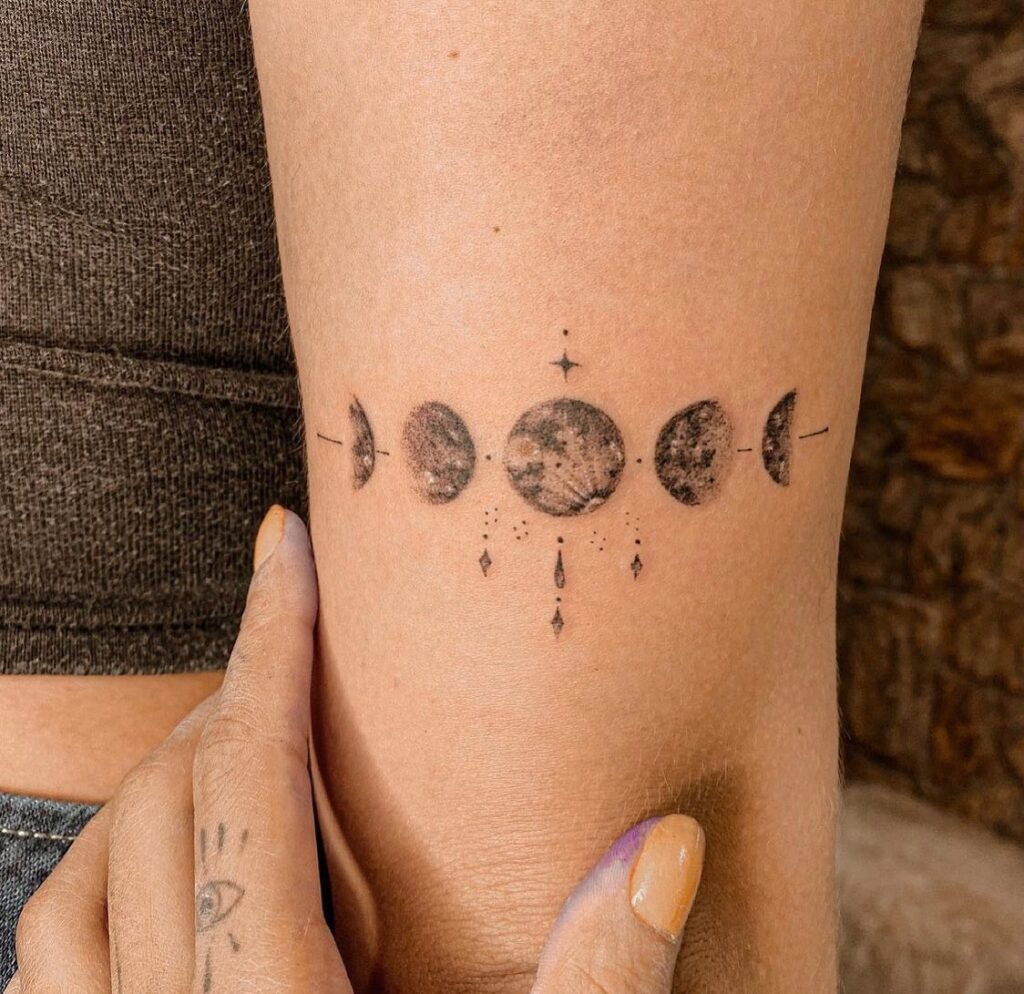
25. Phoenix
The Phoenix is a mythical bird that rises from its ashes, symbolizing renewal, rebirth, and immortality. In many pagan traditions, the Phoenix represents transformation and the ability to overcome life’s challenges. As a tattoo, the Phoenix is often chosen by those who have undergone significant personal transformation or who seek to symbolize their resilience. It is a powerful emblem of hope, strength, and the eternal cycle of life and death. The Phoenix tattoo is popular among those who want to express their journey of self-discovery or their belief in the possibility of new beginnings.
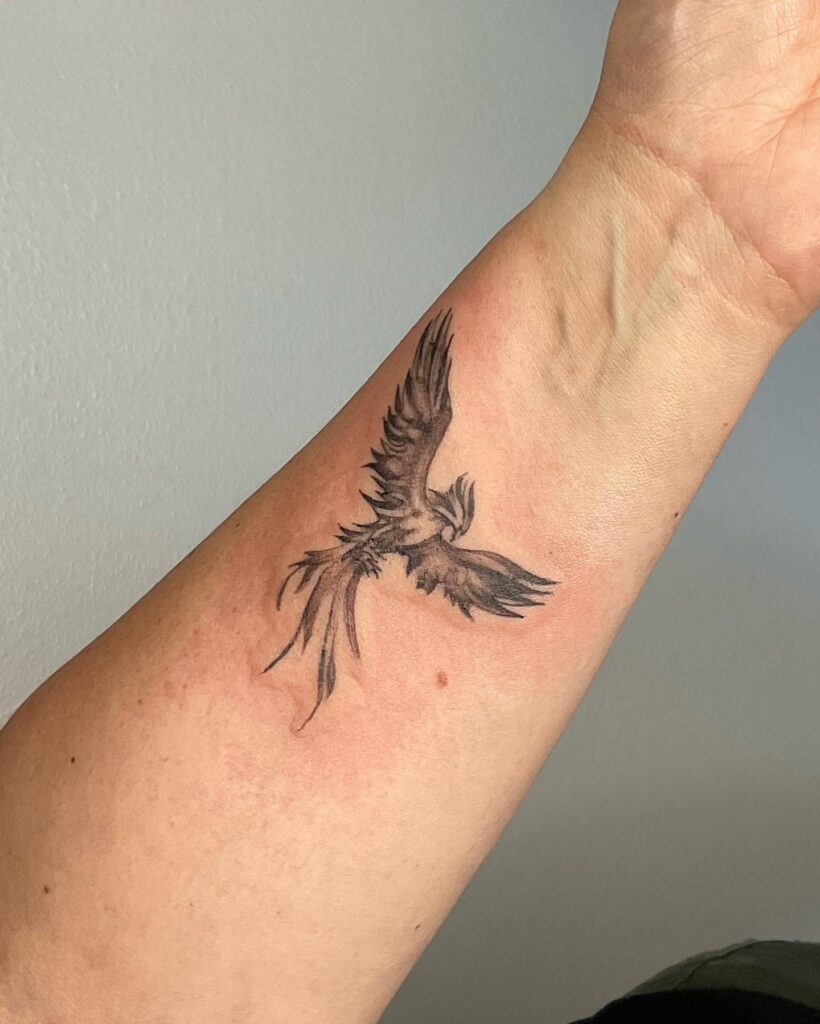
26. Witch’s Familiar
In pagan traditions, a witch’s familiar is an animal companion believed to assist with magic and spiritual work. Common familiars include cats, owls, and ravens, each representing different qualities such as intuition, wisdom, and protection. As a tattoo, a familiar symbolizes the wearer’s connection to magical or spiritual practices and their relationship with the natural world. It can also represent personal empowerment, guidance, and the ability to harness one’s inner strength. Many choose a familiar tattoo to express their identity as a witch or their connection to ancient spiritual traditions.
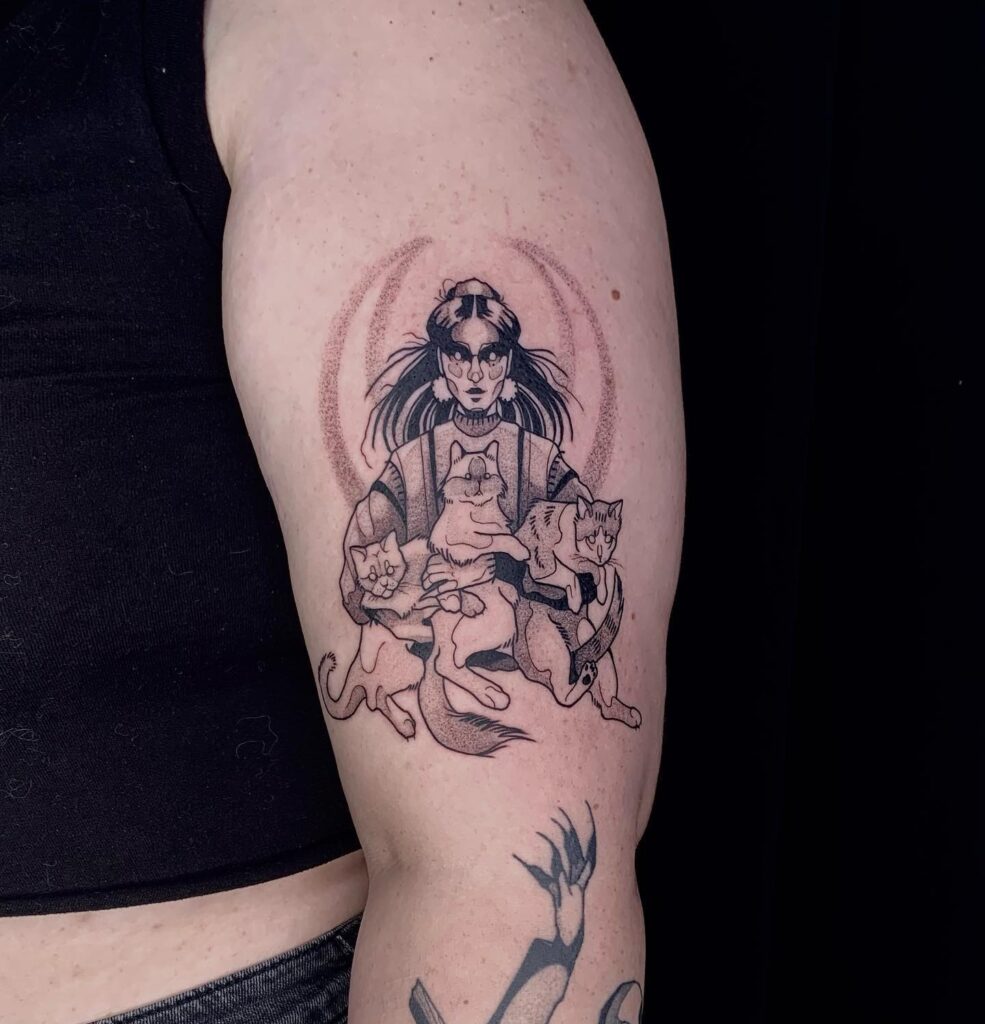
27. Serpent
The serpent is a powerful symbol in many pagan traditions, representing transformation, healing, and renewal. In ancient cultures, snakes were seen as guardians of the earth and symbols of fertility. The shedding of the serpent’s skin symbolizes rebirth and personal growth. As a tattoo, the serpent is often chosen to represent one’s journey through transformation or healing. It can also symbolize wisdom, intuition, and a deep connection to the mysteries of life. Serpent tattoos are popular among those who seek to honor their inner strength or who are undergoing significant personal change.
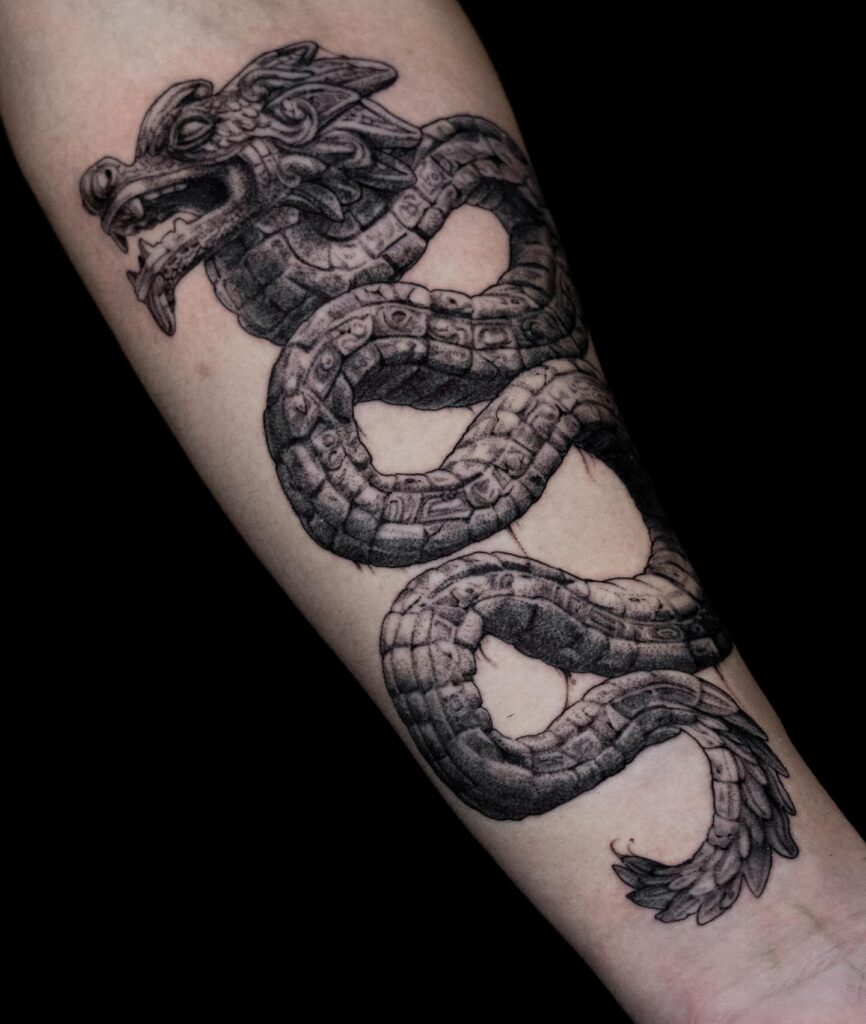
28. Hare
The hare is a symbol of fertility, rebirth, and intuition in many pagan traditions, particularly in Celtic and Wiccan cultures. Associated with the goddess Ostara, the hare represents the arrival of spring and the renewal of life. As a tattoo, the hare symbolizes intuition, speed, and the ability to navigate life’s challenges. It is often chosen by those who feel connected to the cycles of nature or who seek to honor their creative and intuitive side. The hare is also a symbol of transformation, making it a popular choice for those undergoing personal growth.
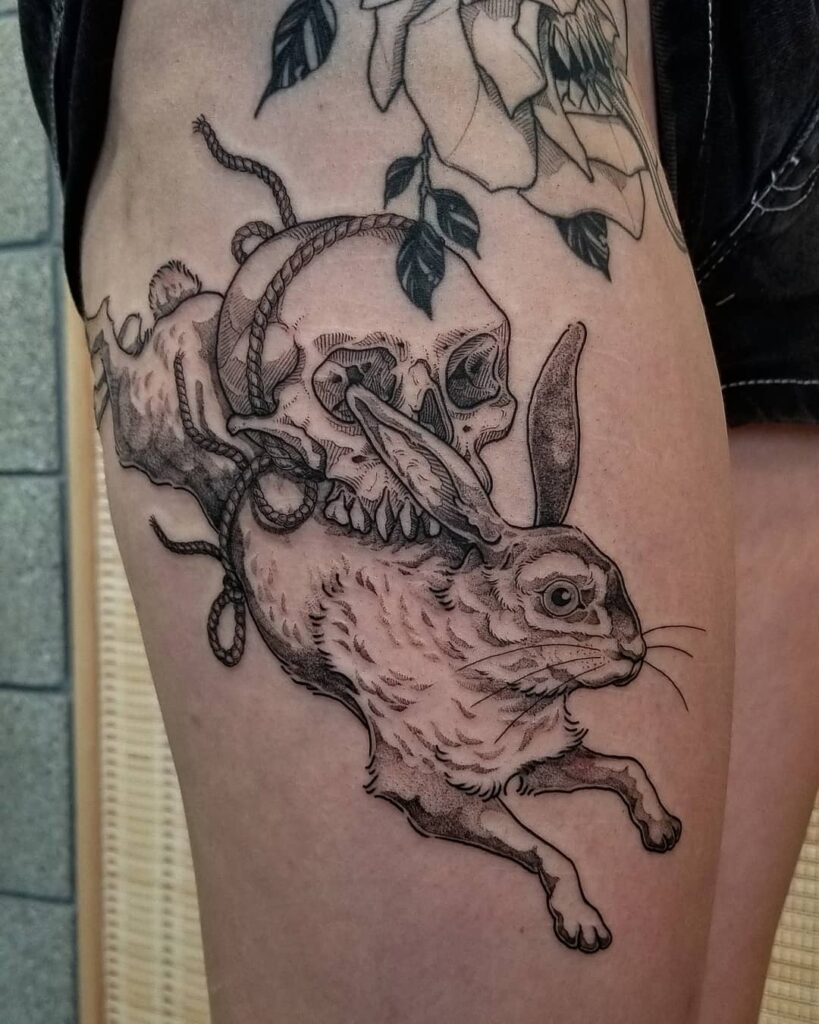
29. Mandrake Root
The mandrake root has been associated with magic and witchcraft since ancient times, known for its human-like shape and powerful properties. In pagan traditions, it is often used in rituals for protection, healing, and fertility. As a tattoo, the mandrake root symbolizes the mysteries of the natural world and the power of plants in spiritual practices. It is often chosen by those who follow herbalism, magic, or who feel a deep connection to the earth. The mandrake root tattoo can also represent personal strength and the ability to draw upon nature’s healing energies.
